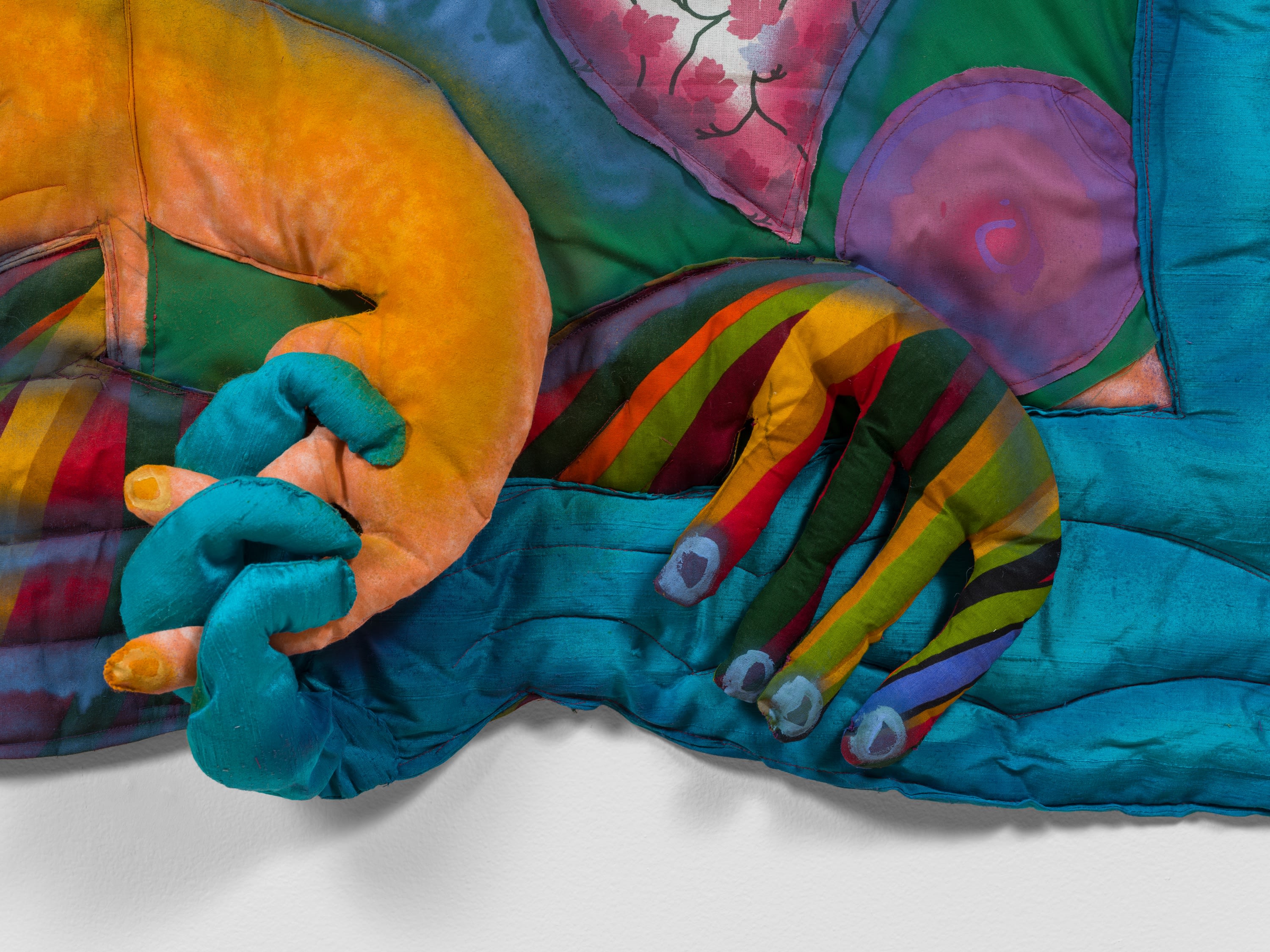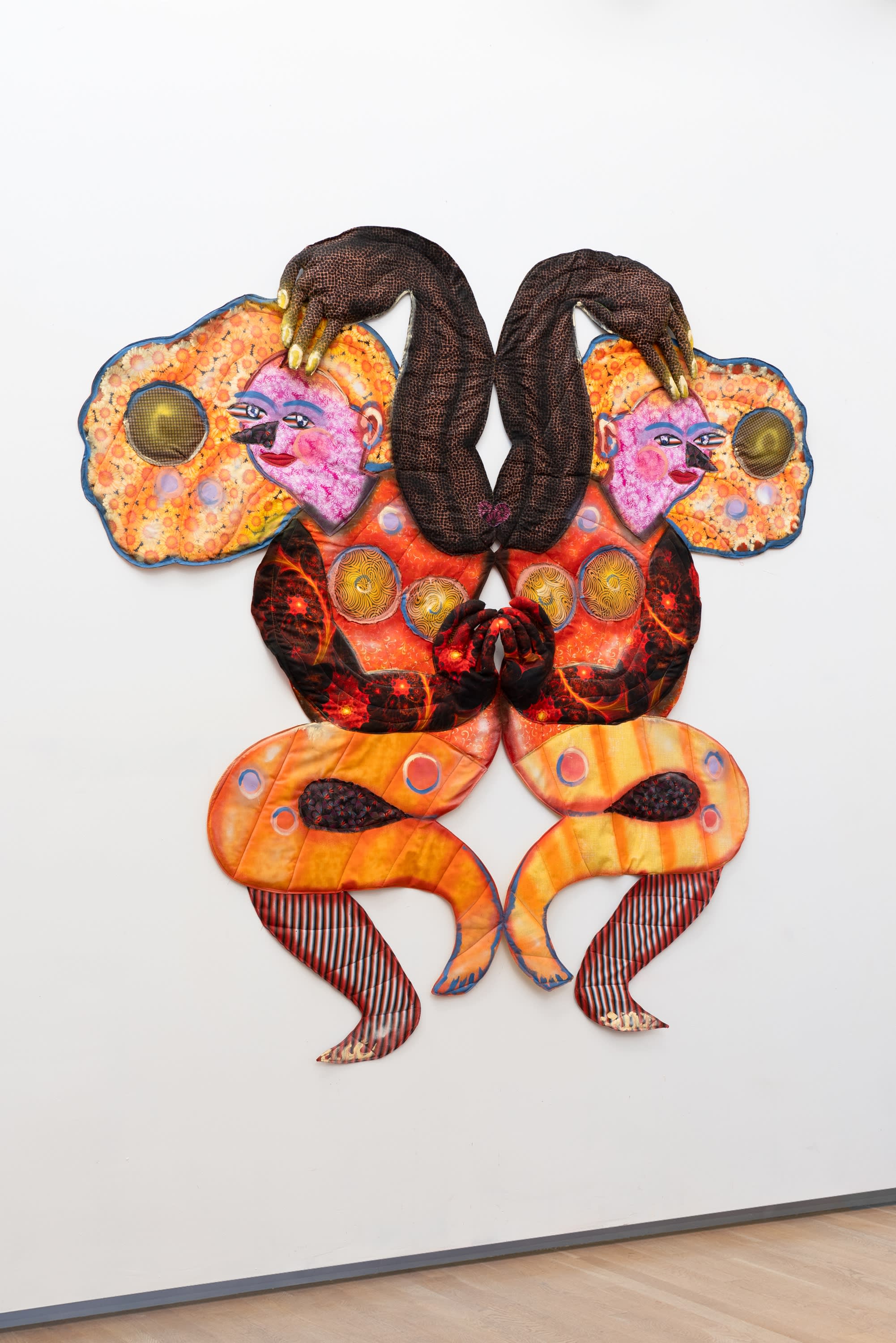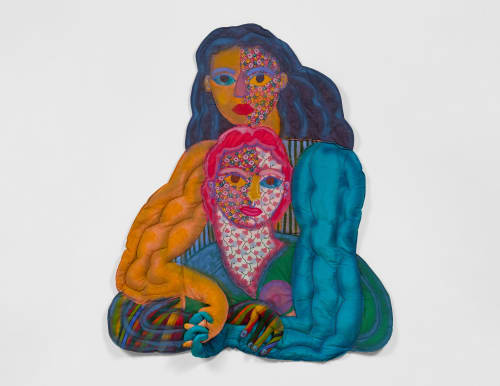Features works by 13 female artists who are using pliable materials in new ways
The new exhibition at the Faye G., Jo, and James Stone Gallery might make you feel like curling up with a good book and a cup of hot cocoa. That would be a mistake.
STUFFED seeks to disassociate soft, plush objects from the realm of the familiar and comfortable and recast them as sophisticated, rebellious—even sexy.
The group show, on view through September 15, is a collection of three-dimensional fiber artworks—or soft sculptures—organized by Boston-based curators Mallory Ruymann and Leah Triplett-Harrington, a writer, editor and frequent College of Fine Arts collaborator.
INSTALLATION PHOTOGRAPH, Stuffed, Stone Gallery, Boston University Art Galleries, JUN 15 – sept 15, 2023, PHOTO Mel Taing
“I hope this exhibition helps people consider how textiles and fabrics influence our everyday lives,” says Triplett-Harrington. She and Ruymann have collaborated on previous shows.
The aesthetic choices the show’s 13 artists—all women—have made leave viewers no choice but to think beyond teddy bears and down comforters. Consider the challenging, seductive gazes on view in Maria A. Guzmán Capron’s Piedra de Mar, a quilted sculpture featuring two women literally sewn from the same cloth, sharing an intimate embrace while their eyes confront the viewer. Or how Rose Nestler’s Affordable Facelift, a wall display featuring metallic-colored tufted seat sections, resembles a grimacing, drooping face.
Comfort is not the name of the game here.

MARIA A. GUZMÁN CAPRON, PIEDRA DE MAR (detail), 2022. FABRIC, THREAD, BATTING, STUFFING, ACRYLIC PAINT AND SPRAY PAINT. 50 1/2 X 42 X 4 IN. COURTESY OF THE ARTIST AND SHULAMIT NAZARIAN, LOS ANGELES.
Beyond the individual aesthetics, the boldness of this exhibition, named a Boston Globe staff pick, can be seen in its broader mission: to take media often dismissed as domestic crafts—sewing, quilting, and felting—and show how they can be used to create art that defies categorization.
“Our curatorial partnership foregrounds femme, women-identifying, and gender queer artists,” Triplett-Harrington says. ”STUFFED is part of a larger project to recast and recontextualize feminist artists and art-making.”
“There is a grain of identity politics within the curatorial theme that provides a platform for discussion about gender,” Ruymann adds, “and many of the artists in the show make work explicitly about the experience of being a woman’s body.” Case in point: Courtney Stock, whose works are explicitly rooted in the context of her body. Two of her mixed-media sculptures in the exhibition—humanoid figures called mother and child—hang side by side in the gallery. Headless forms stuffed with polyester and bedecked with scraps of silk, beads, and semiprecious stones, they are inspired in part by ultrasound imagery, Stock says.

Maria A. Guzmán Capron, Doble, 2022. Fabric, thread, batting, stuffing, spray paint, latex paint. 70 ¼ x 68 in. Courtesy of the artist and Shulamit Nazarian, Los Angeles.
“How do we see frames or borders around paintings? How can preestablished boundaries be manipulated for progress?” she asks. “I hope to give my audience a different experience and have them question the way they may see traditional framing.”

MARIA A. GUZMÁN CAPRON, DOBLE (detail), 2022. FABRIC, THREAD, BATTING, STUFFING, SPRAY PAINT, LATEX PAINT. 70 ¼ X 68 IN. COURTESY OF THE ARTIST AND SHULAMIT NAZARIAN, LOS ANGELES.
Amid all the subversion happening in STUFFED, the show even occasionally subverts itself.
“We’ve snuck in a few artworks that are not actually stuffed, but carry the suggestion of fill,” Ruymann says.
“The flexibility of fiber-based art is what makes it special,” Ruymann says. “Painting, sculpture, installation—the possibilities of the medium seem endless.”



